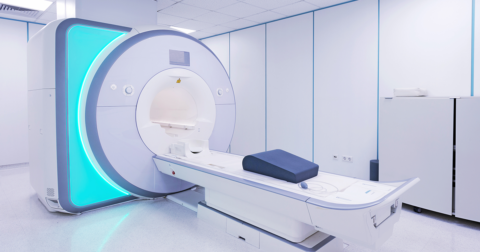What is a biomarker?
Biomarkers is a term that often comes up when we talk about MS treatment and clinical trials - but what are they and why are they important?
Last updated: 30th September 2022
Biomarkers tell us more about the body or state of a disease. Like checking oil in a car, a biomarker is an indicator of how the body is functioning. A biomarker is something we can readily detect and measure, be it a clinical sign, molecule, or picture of the brain. Biomarkers may be used to diagnose MS, measure disease progression and predict disease onset. They can also tell us if an MS treatment is working effectively. There are various ways to measure biomarkers, including blood tests, urine tests, lumbar punctures, and scans of your brain or spinal cord.
What biomarkers do we have in the MS toolbox?
Several biomarkers are being studied and used in clinical trials now. Here are a few examples.
MRI scans of the brain or spine
An MRI or ‘magnetic resonance imaging’ scan uses strong magnetic fields and radio waves to take detailed photos of the brain or spinal cord. MRI is the most established biomarker to date. It can show the number, age and size of lesions in the brain. This can help us diagnose MS and teach us about MS progression.
Measuring oligoclonal bands in the spinal fluid
Sometimes doctors test for so-called ‘oligoclonal bands’, which show disease activity. About 80-95% of people with MS have oligoclonal banding in their spinal fluid. A lumbar puncture, also known as a spinal tap, will allow doctors to measure the oligoclonal bands. This can help them monitor ongoing MS activity and assess treatment response.
Measuring Neurofilament in the blood
Neurofilament Light (NfL) has been in the spotlight lately. Neurofilaments are the building blocks of axons – nerve fibres that connect neurons, carrying messages throughout the body. They come in different sizes – heavy, medium, and light. Damaged nerves release neurofilaments into the blood or spinal fluid, which can be measured by a simple blood test. Neurofilament Light is not entirely specific to MS – it can also be seen in Parkinson’s disease and Amyotrophic Lateral Sclerosis (ALS). Despite this, NfL is a promising MS biomarker as it may tell us more about disability and progression.
What does the future hold?
Biomarkers are very important. If we diagnose and treat MS early, we could reduce the risk of MS, slow disability progression and delay the onset of progressive MS.
Measuring NfL in the blood is not yet routinely used in the clinic or clinical trials, but several studies have looked at NfL. Both in relapsing remitting MS and progressive MS, concentrations of NfL in the serum of the blood correlate with levels of disability and results from MRI scans. NfL can predict the course of disease and response to therapies. When the disease worsens or improves, the NfL levels increase or decrease as a result. Combined with the convenience of measuring NfL in the blood, it is a very promising biomarker.
Many studies are still ongoing, both in relapsing remitting MS and progressive MS forms. For instance, we need to clearly define how specific MS therapies affect NfL levels. We need to understand how NfL levels relate to what the clinical presentation and imaging outcomes look like. We need to standardise how we prepare and measure NfL in practice. We also need to make sure that the same standard is applied across the globe, so that we can compare results across the globe. The Progressive MS Alliance, which is a working globally to speed up the development of therapies in progressive MS, are working to address these issues.
Once these questions are answered, we may be able to introduce NfL for routine use in clinics and clinical trials.
